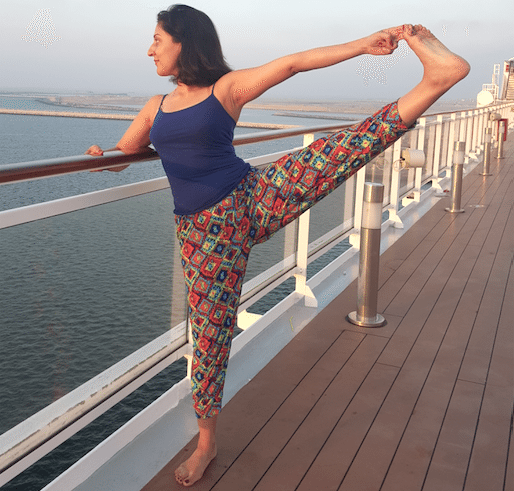Ever wonder how the graceful flamingo can balance effortlessly on one foot and even manage to fall asleep! For humans this is an impossible feat as even simple balances demand our full wakeful attention.
Balance asanas develop the functions of the cerebellum, the brain center that controls how the body works in motion. When we balance, the focus required to hold the poses brings balance at the physical, emotional and psychic levels.
To steady the mind practice concentration on one point, at eye or navel level, on the ground or as indicated in the individual pose. This allows the body to remain steady in seemingly difficult poses for a long period of time.
The three essential elements of balance are alignment, strength and attention. Alignment of the body with gravity is vital as it makes the balance physically possible. Strength gives us the power to create, hold and adjust the alignment and attention monitors alignment so we know how to correct it moment to moment.
In the one legged standing balances, you can enhance your equilibrium by spreading your toes and ball of the standing foot. The broader your base the more stable you are. Your arms can be used to balance by holding them out to the sides like a tightrope walker to help stabilize yourself.
The few balance poses that we will be covering over the coming weeks:-
1. One Legged Prayer Pose [Eka Pada Pranamasana]
2. Eagle Pose [Garudasana]
3. Lord Shiva’s Dance [Tandavasana]
4. One Foot Pose [Eka Padasana]
5. Crane Pose [Bakasana]
6. Raised Hand to big toe Pose [Utthita Hasta Padangusthanasana]
7. Spinal Coloumn Pose [Merudandasana]
8. Unsupported Back Stretching Pose [Nirlamba Paschimottanasana]
9. Half Lotus Leg Stretch Pose [Ardha Padma Padottanasana]
10.Tiptoe Pose [Padanagushthasana]
Namaste!
Neelanjana Bharadwaj– Yoga Expert

